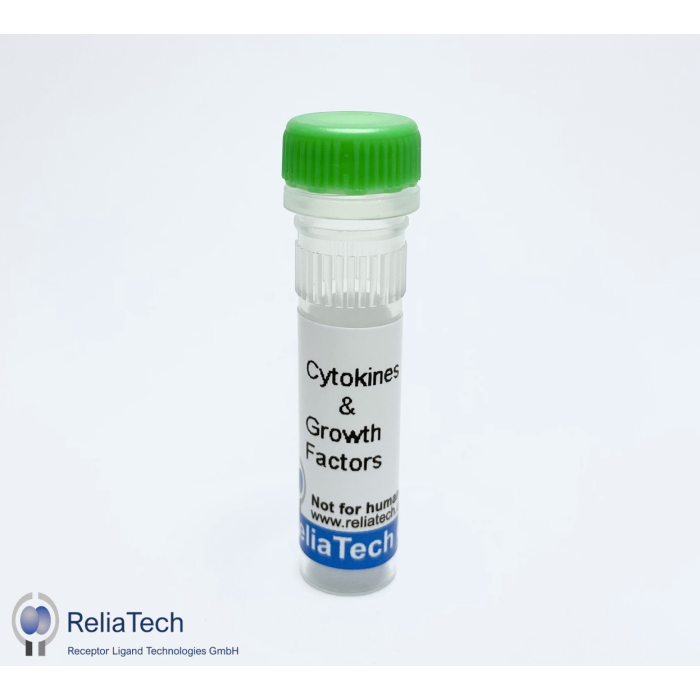Description / human Lymphotactin protein
Lymphotactin is the only known member of the C-chemokine family and signals through the receptor XCR1, formally known as GPR5. The spleen shows the highest level of lymphotactin compared to peripheral leukocytes, lung, colon and small intestine. Lymphotactin is chemotactic towards lymphocytes but not towards monocytes or neutrophils. Recombinant human Lymphotactin is a 10.0 kDa protein consisting of 92 amino acid residues.
More Information
| Size | 20 µg |
|---|---|
| Source | E. coli |
| Biological Activity | Determined by its ability to chemoattract human T cells using a concentration of 10.0-100.0 ng/ml. |
| Purity Confirmation | > 98% by SDS-PAGE & HPLC analyses |
| Length [aa] | 92 |
| Molecular Weight | 10 kDa |
| Species Reactivity | Mouse, Human, Hamster, Bacteria |
| Formulation | lyophilized |
| Protein Sequence | GSEVSDKRTC VSLTTQRLPV SRIKTYTITE GSLRAVIFIT KRGLKVCADP QATWVRDVVR SMDRKSNTRN NMIQTKPTGT QQSTNTAVTL TG |
| Preparation | This antibody was produced from a hybridoma (mouse myeloma fused with spleen cells from a rat) immunized with cell lysates of mouse neutrophils. IgG2 fraction of the culture supernatant was purified by Protein A/G affinity chromatography. |
| Synonyms | XCL1; LTN; ATAC; LPTN; SCM1; SCM-1; SCM1A; SCYC1; SCM-1a |
| Uniprot ID | P47992 |
| Protein RefSeq | NP_002986.1 |
| mRNA RefSeq | NM_002995 |

